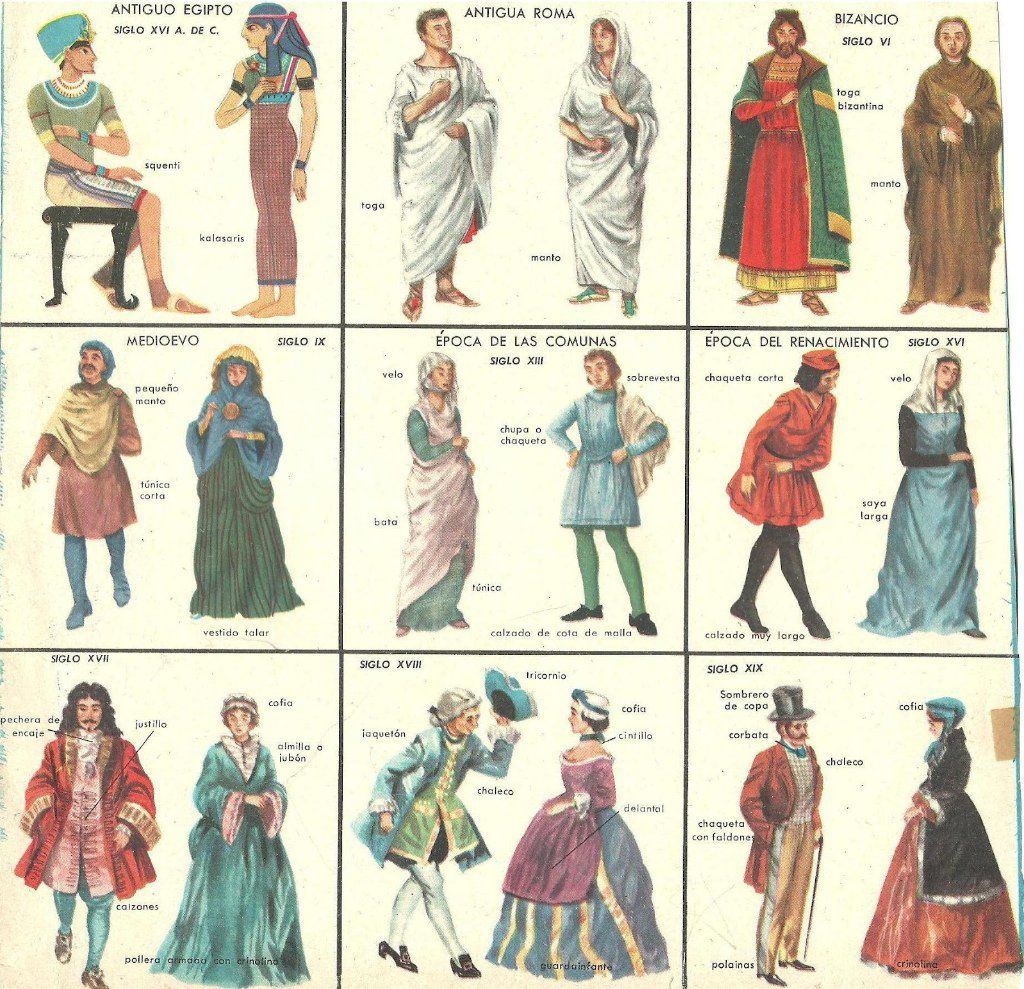MY WORLD 4
Summary of the history of fashion:
In the Egyptian civilization, one of the first known in history, fashion already occupied an important place in everyday life. The same image comes to mind when we talk about the ancient Egyptians, a perfectly identifiable iconic image that represents the most common way of dressing in this culture. It is characterized by a kind of white linen skirt called shenti and a black wig that hung down to the shoulders. Based on this, there were different types of ornaments and accessories that the nobility used to differentiate themselves from the popular classes. While they wore light and cool clothing adapted to the local climate, the Egyptians did not give up on fashion. And that fashion was one of the main elements why today we have created such a particular image of ancient Egypt.
Another culture perfectly recognized by its way of dressing was the Greek, where also stood out the tunics, mainly white ones made of linen, wool, cotton or silk, accompanied by some sayo or shawl of colors and some ornament or trimming. The main material traded by the Phoenicians was "Tyrian purple", a natural dye for dyeing clothes that became very popular in all Mediterranean cultures. The Phoenician trade could be considered the first type of "globalization" in history, and led to a significant period of time when fashions became standardized and the various villages of the Mediterranean, from one end to the other, began to dress similarly, thus giving rise to a fashion that represented more of an era than a particular village.
Over the centuries, ways of dressing evolved, though little. It was not until the Renaissance that fashion became more relevant than it is today, with the appearance of suits of various bright colours and new shapes and styles, with different types of sleeves, pleats and falls. It was at this time that the famous corset appeared, a garment that women wore around their waists to enhance their figure. From then on, the fashion became more changeable and with the arrival of each century new styles appeared that extended and became a trend in all European courts.
In the 18th century France set out to be the benchmark in fashion and Louis XIV promoted a genuine haute couture industry. The tie and the jacket were born, a type of long jacket that became a mainly military garment. Such was the importance of fashion at that time that it was the pretext for starting a revolt in Spain, where King Carlos III wanted to introduce by law the European fashion of short cloak and three-cornered hat, something that was opposed by an important sector of the population, who defended continuing with the long cloak and wide brimmed hat that had been used until then.
The 20th century brought about a big change in the way people dressed, especially women. The influence of Coco Channel was such that it brought about a radical change, going from a recharged and ostentatious fashion to a simple, discreet, elegant and direct way of dressing. Although maintaining these characteristics as a base, the 20th century has been characterized by the volatility of fashion, changing and modifying itself practically every decade. Trends have been born that a decade later have gone out of fashion and then have re-emerged and become a reference once again.
This is a short video about the fashion in 20th century and early 21st century.
Women: https://youtu.be/M4z90wlwYs8
Men: https://youtu.be/DaSkMWVlFUU




Comentarios
Publicar un comentario